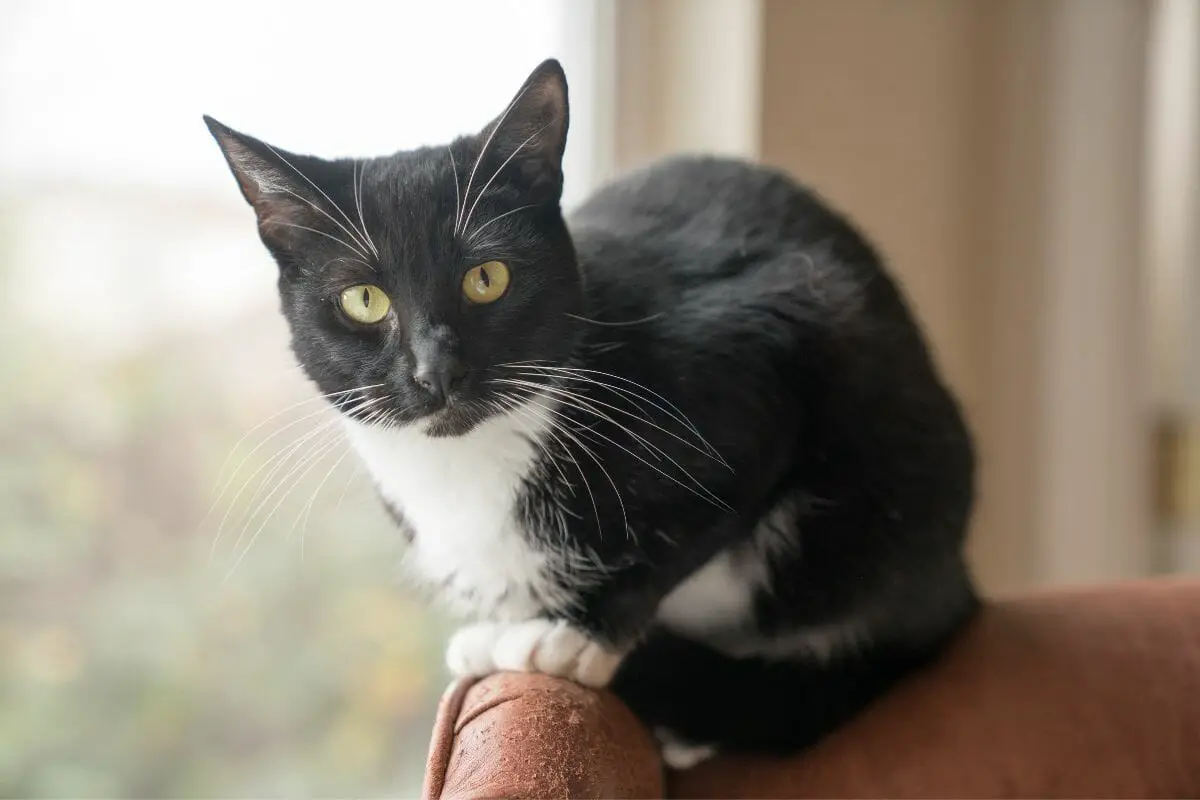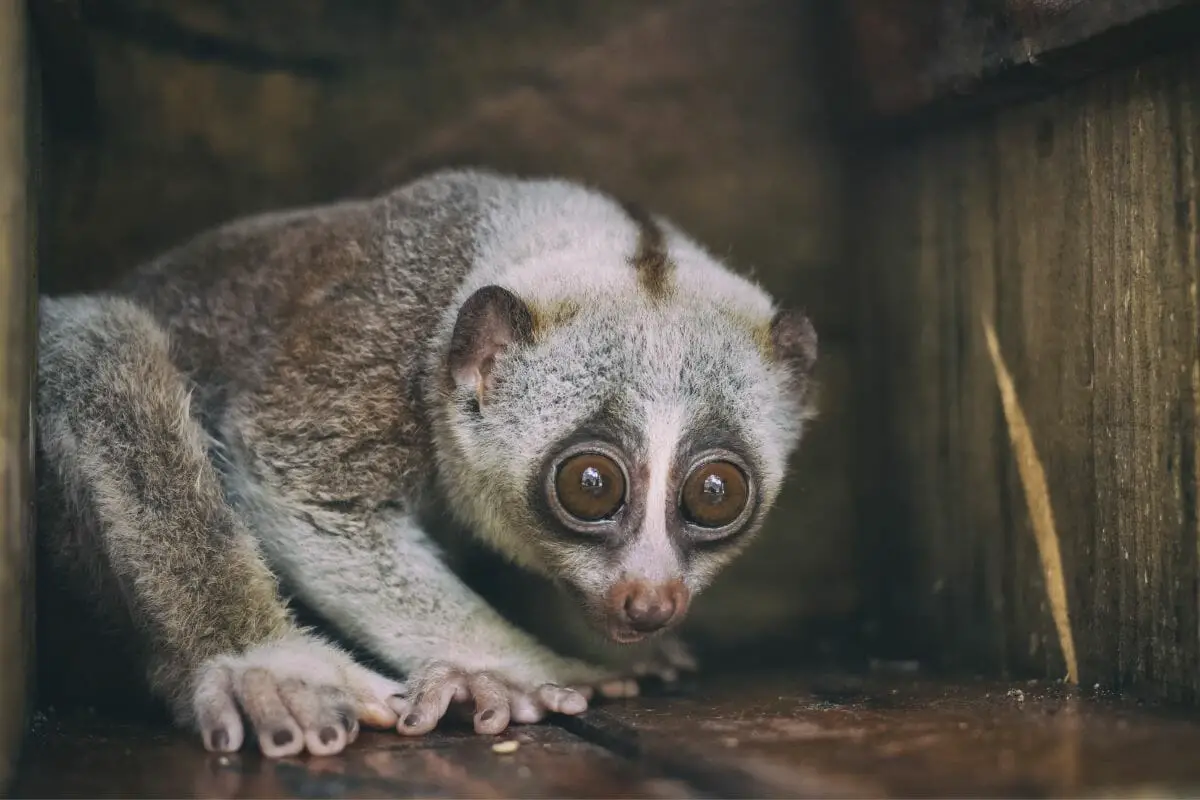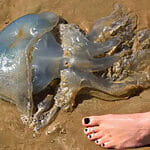We as humans are predisposed to find a lot of animals very cute. Which is crazy considering how many of them could kill us given half a chance.

Some creatures, no matter how big their eyes are, or quiet they seem, can be dangerous or even deadly if provoked, and this article will list eight of them here.
An honorable mention is going to go to deer, responsible for an average of 120 human fatalities in the USA alone in a single year.
This is however because we accidentally hit them with our cars, and so I don’t think we can really blame the deer for that.
1. Chimpanzees
No way! I hear you cry, not our cousins! Unfortunately yes, these sweet hominids have been known to maim and even kill humans on occasion.
Though they have a reputation for being playful and kind, chimps and other primates are incredibly strong and usually have sharp teeth.
If you happen to be hiking or exploring somewhere that has wild chimpanzees, it’s really best that you avoid them, rather than risk provoking them.
2. Dingoes

These are not dogs. They might look shockingly similar to our canine besties, but these wild dogs are far more similar to coyotes and wolves than to the lapdog sleeping in the corner of your room.
Dingoes even sound like smaller dogs, but they’re not to be mistaken. These wild dogs can be found in Australia, and like a lot of other Australian animals, are best to be avoided.
They have been known to kill livestock and even people when provoked or threatened.
3. Cows
One that might be particularly surprising is the fact that Cows are some of the deadliest animals that we keep around, though this is more due to probability bias than anything else.
If we kept thousands of sharks in captivity and interacted with them everyday, the number of shark deaths per year would probably be higher. However, as it stands, cows are responsible for about 22 deaths per year in the USA.
Of these, 75% were intentional attacks from provoked, aggressive animals. The majority of these attacks are by bulls, then female cows, and a large number of them were by groups of cows that huddled together and attacked as a group.
4. Domestic Cats

Now, these aren’t particularly dangerous to humans, however, a study done once estimated that domestic cats that are allowed outdoors kill an estimated 2.4 BILLION birds and 12.3 BILLION small mammals every year, and that’s just in the United States.
Those are ridiculously high numbers that have resulted in a lot of experts urging cat owners to keep their pets indoors.
Imagine if those numbers were human lives! That’s basically our whole population, twice. Every year.
5. Hippopotamus
If you’ve ever watched two hippos fight during a nature documentary, then you probably already know how absolutely dangerous these animals can be.
These gigantic omnivores can weigh up to two tons and are actually considered one of the deadliest animals in the world.
They are fiercely territorial and protective of their offspring, however they have also been known to attack and kill humans without provocation.
They have surprisingly sharp teeth and incredibly powerful jaws that they can use to bite down and clamp.
6. Mute Swans

Sure, they’re beautiful and graceful, but if you’ve ever been chased by a swan then you know how vicious they can be.
Swans typically give off the appearance of being peaceful and serene, however if you were to invade its territory or threaten it or its young, you’ll quickly find out that the serenity is a lie.
Everyone knows how vicious geese can be, so imagine how bad a mute swan has to be in order to beat geese in fights the majority of the time.
You don’t even get a warning with mute swans the way you do with other members of the swan species, they just go straight for the eyes.
7. Hooded Pitohui
How can a small bird like the hooded pitohui be anywhere close to dangerous, you ask?
Well it’s because these birds have a toxin in their skin and feathers called batrachotoxin. This is a neurotoxic alkaloid, and the same sort of toxin found in poison dart frogs.
A small dose of this toxin can bring on a burning painful sensation in humans, however a high enough dosage could cause cardiac arrest, paralysis, or even death.
This makes the hooded pitohui one of the deadliest birds on earth, no matter how sweet they look.
8. Slow Loris

Go look at a picture of a slow loris then come back. It practically looks like a stuffed animal brought to life, and those big eyes just scream innocence to our silly human brains. In reality, this is one of the most venomous animals out there.
Usually very calm creatures, slow loris’ have a tendency to be incredibly vicious when provoked and can combine their saliva with their venom to create a deadly cocktail that can put you into anaphylactic shock.
If you’re not careful, these things can kill you in a really nasty way.
Bottom Line
We, as humans, have evolved to be able to look out for danger. Large body parts, sharp looking teeth or claws, and aggressive noises all typically tell us when an animal is to be avoided.
However, in some cases, animals have developed a way around this by evolving to look as placid and cute as possible to lure us and other predators into false senses of security.
In exploring the unique world of animals that are quiet yet fierce, we discover a fascinating interplay between silence and strength. Creatures like turtles, snails, and jellyfish thrive in their environments, often without the need for vocalization. These animals, including the stealthy snake and the unassuming rabbit, rely less on vocal cords to communicate and more on body language or other forms of expression.
For instance, a snake may hiss as a warning, utilizing sound minimally yet effectively. Similarly, goldfish and crabs, denizens of the underwater world, exhibit fierce survival instincts, often without the need to vocalize. Even land animals like the sloth and giraffe, known for their quiet demeanor, can be surprisingly resilient and strong when needed.
In conclusion, these quiet but fierce animals, from reptiles to worms, demonstrate that strength is not always synonymous with noise. Their ability to survive and thrive, sometimes with only the occasional snort or hiss, showcases the diverse strategies of adaptation in the animal kingdom.
This intriguing aspect of animal behavior underscores the importance of understanding and respecting the varied ways in which creatures, both big and small, navigate their ecosystems.
In a lot of cases, it’s not the animal’s fault, but our own for forgetting that these are wild animals, not toys, and shouldn’t be approached or provoked. If you come across these animals in the wild, just leave them alone.
- What Should I Do If A Koala Bites Me? Safety Guide - 2024-05-30
- Are Kangaroos Born Without Hind Legs? A Fascinating Journey - 2024-05-30
- Animals That Look Like Squirrels - 2024-05-30









